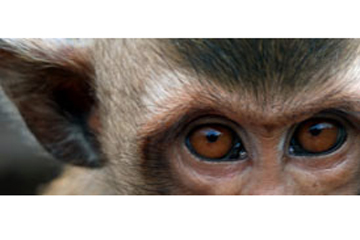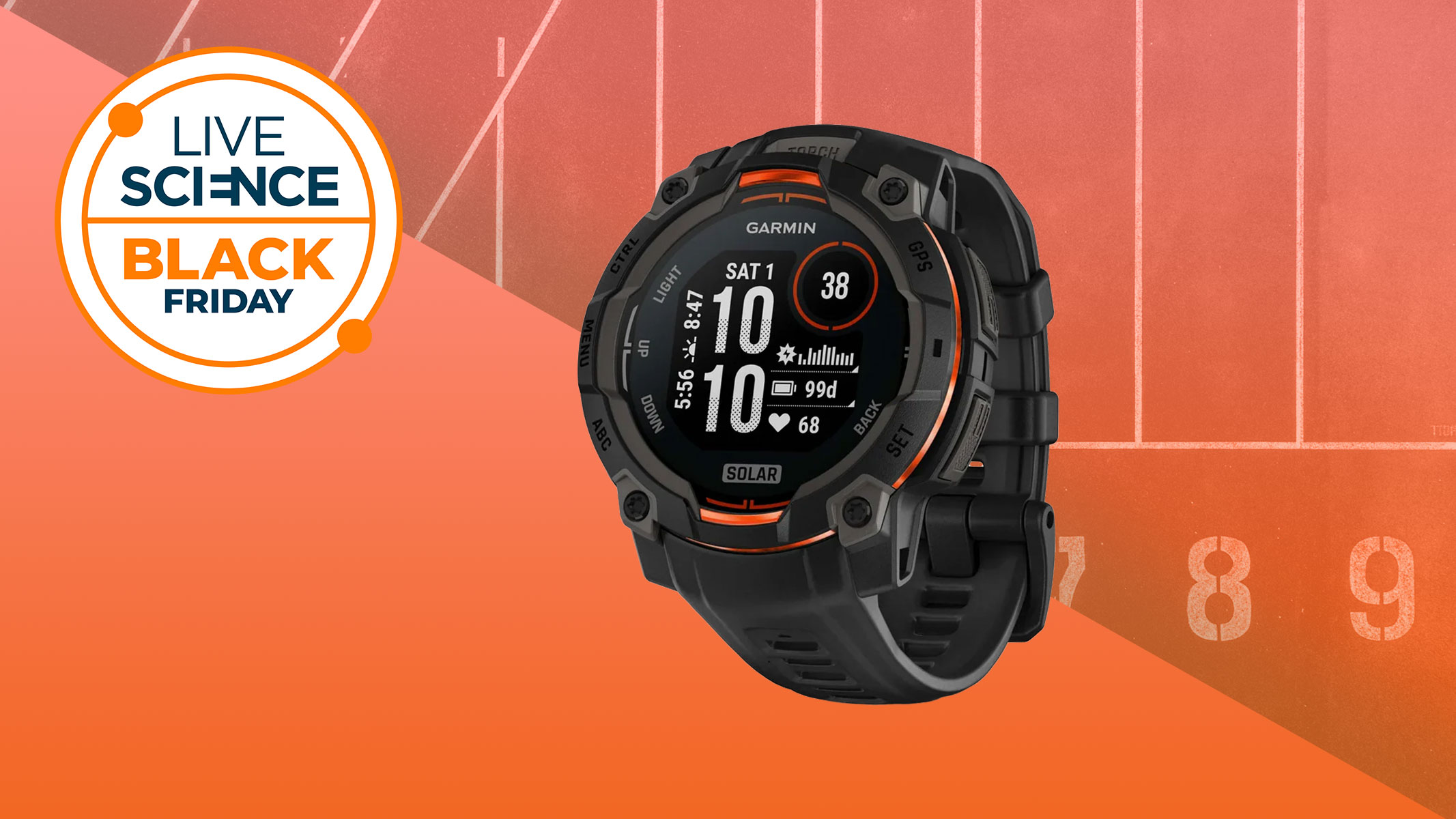What Blind Monkeys Might 'See'

(ISNS) -- When the area of the brain responsible for processing vision is destroyed, does some visual ability still remain? The answer is yes, surprising even to human patients who have experienced this condition, but researchers are looking to monkeys to determine what, and how much, exists.
The long-documented phenomenon of blindsight has shown that though much is lost, much can abide. Even though a blindsight patient doesn't consciously know it, his or her visual attention is still being guided by stimuli like movement in their "blind" field, according to Laurent Itti, a researcher at the University of Southern California in Los Angeles who studies blindsight.
A medical officer attending to soldiers wounded in World War I had first described blindsight as a phenomenon resulting from wounds in the occipital lobe. This is the area of the brain that contains most of the visual cortex, which processes visual signals. The term "blindsight" itself was coined in the 1970s.
"Patients showing restricted visual fields from occipital wounds declared they could see nothing when an object present in the blind field is kept stationary," George Riddoch wrote in the journal Brain nearly 100 years ago, "whilst they were immediately conscious of 'something' moving when the object was oscillated.”
But although there are several patients in whom this phenomenon is observed, what do they actually sense – unconsciously -- in their visual field? Itti and his Japanese collaborators wanted to get a quantitative fix on this. They wondered how different blindsight vision is compared to people with normal vision -- and even among patients with blindsight.
To produce blindsight, the collaborators based in Japan first removed the the visual cortex controlling vision in one eye in each of five macaque monkeys. Sitting in a primate chair, the monkeys then watched 164 short video clips while their eye movements were tracked. After extensive data collection lasting a few years, analysis took place in Itti’s lab.
The study appeared in the journal Current Biology.
Get the world’s most fascinating discoveries delivered straight to your inbox.
The researchers found that even without the primary visual cortex, the monkeys' affected eyes were guided towards visual features like movement and color.
"They still have significant visual ability," Itti said. The finding challenges the idea that in vision pretty much everything is interpreted through the visual cortex.
Typically, the notion was that light would travel from the retina through the optic nerve to a relay station in the thalamus, a deeply embedded brain structure that acts like a switchboard for nerve signals -- to the primary visual cortex at the back of the brain and then to higher brain centers to produce sight.
But with the primary visual cortex missing, the pathway of the nerve signals is disrupted. Maybe more ancient pathways in the brain are being activated, Itti offered, and pointed to an area in the brain stem, the part of our brain connecting to the spinal cord, which evolved from much simpler visual systems.
This is the superior colliculus, literally upper hill, a structure that sits on top of the brainstem and is present in snakes and frogs as well, guiding their swift swipes on prey.
"What the frog has, we have too," Itti said. "Your frog brain is capable of doing a lot of stuff."
Michael Schmid, a researcher at the Ernst Strungmann Institute for Neuroscience in Frankfurt, Germany said human subjects with blindsight often found it ironic when he asked them to participate in a visual experiment. But Schmid said the most interesting aspect the experiment touches upon is the connection between visual attention and consciousness.
"The paper uses the phenomenon of blindsight in monkeys and links it to another paradigm which is very well-established," Schmid said. "When you play a video game, there are constantly things popping up that are grabbing your attention."
This is called bottom-up attention, which could be thought of as the unconscious attention that is guided by external events such as movement or brightness. In top-down attention, you actively decide to focus on a particular task.
"For bottom-up attention to work, [it seems] you do not need the primary visual cortex," Schmid said. "That is a big finding."
The features that guide attention in blindsight, according to the study, include not only movement -- which has been known for some time -- but less obviously, color as well.
Though the monkeys could track movement and color, their ability to distinguish edges in the blind field was lost. The experiment focussed on what guided the monkey's attention, rather than what features the monkeys could discriminate.
"If you have a pattern that has mostly vertical lines and a line is broken, the monkey will not be very interested in that," Itti said. "[But] a pattern which is all green and a red dot is there, the monkey will be very interested."
Itti, whose research is partially funded by the Defense Advanced Research Projects Agency, said that DARPA wants to know more about how vision works in humans.
Even with extensive damage to their visual cortex, patients can do much with the brain that remains, Itti said.
A patient known as T.N. suffered two successive strokes in 2003, which destroyed his visual cortex in both eyes. Yet, T.N. could easily navigate a corridor filled with obstacles.
"Maybe such patients don't know the extent of their abilities because they are unconscious," Itti said. "They could be trained to trust this unconscious ability more."
Inside Science News Service is supported by the American Institute of Physics.
